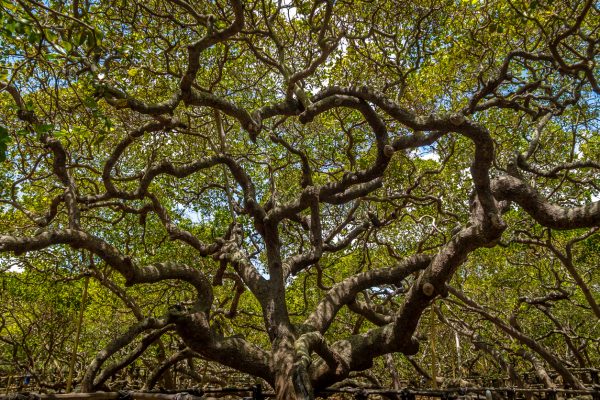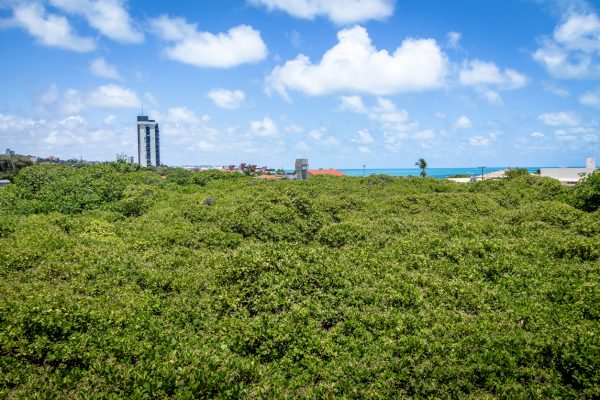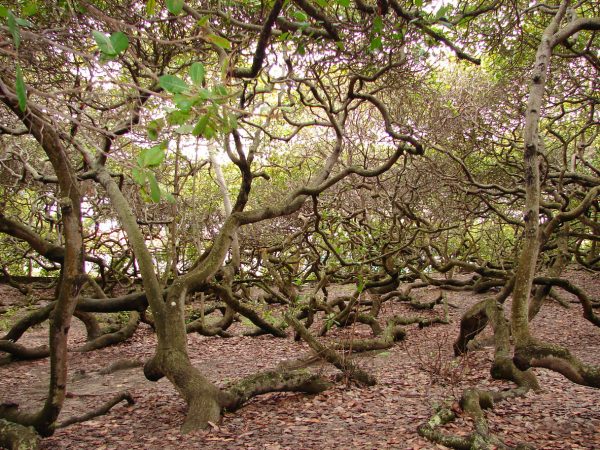The World’s Largest Cashew Tree, Covers Two Acres
Brazil is famous for a lot of things: bronzed bodies laying on white sand beaches; Carnival, the annual parade and dance party that brings millions to the country to celebrate with the locals for a week, and incredible food and tourism destinations that make it the perfect destination for a sun drenched vacation.
Brazil has something else, too, something that many folks may not realize but are stunned when they see it. Brazil is home to the world’s largest cashew tree, and that’s not hyperbole — that’s according to the Guinness Book of World Records.

The tree covers an astonishing two acres, its branches and limbs snaking out as far as almost 165 feet from the main trunk. An entire park is dedicated to this cashew tree, and it is such a tourist draw that a small fee is charged to wander around it, under its branches and over the 91,500 square feet of room it takes up.
And people — residents and tourists alike — are happy to pony up for the pleasure, because there really is no other cashew tree like this one anywhere on Earth. Money raised goes to the care, tending and feeding of this natural marvel.
The scientific name for a cashew tree in Latin is “Anacardium Occidentale.” But to most of, cashew trees are simply a source of wonderful nuts, providers of protein in everything from a vegetarian stir fry to a nutritional snack after a workout. Salted or plain, candied or spicy, cashews are used in cuisines almost right around the globe.

The one in the state of Rio Grande do Norte, near the capital city of Natal, is the size, experts say, of about 70 “regular” cashew trees.
It hasn’t grown this way because of pruning, but rather because of two genetic mutations that cause its limbs to grow out almost horizontally as well as upwards.

Looking at this specimen is rather like looking like a forest, particularly in photographs taken from an aerial perspective. It is an absolutely remarkable and incredible sight.
No one is entirely certain how the cashew tree came to be located where it is, although rumours and speculations and theories abound.
Some think it has simply always been there, and that it is as much as 1,000 years old. Others are somewhat more realistic, and believe that a local fisherman by the name of Luis Inacio de Oliveira, planted the tree in 1888, making it about 130 years old.
Whether one of those origin stories is accurate or it came to grow there in some entirely different way, one fact is certain: this tree is loved, admired and photographed more than any other cashew tree in existence, anywhere in the world.
More than 18,000 photographs of it have been put on Instagram by “nut struck” visitors, which says something about how wildly popular this tree is.
Because it just keeps growing, and four of its five branches put roots into the ground whenever they touch down, some say it will one day need pruning.
It hasn’t happened yet, but the tree may jeopardize a nearby roadway if its branches are not someday corralled into some kind of submission. But so far, officials in Natal have not said when, or even if, that is going to happen.
In the meantime, this cashew tree continues to be a huge draw for visitors who want to stroll beneath its forest-like canopy.
Brazil, like so many other nations, still has travel restrictions in place because of the coronavirus. But eventually its cities and tourist spots will be open to visitors once again, right along with its famous beaches.
‘Monster’ Cane Toads That Kill Dogs With Toxic Glands Surface in Florida
Taking an afternoon to visit the biggest cashew tree in the world is worth every penny that’s charged as the price of admission.





